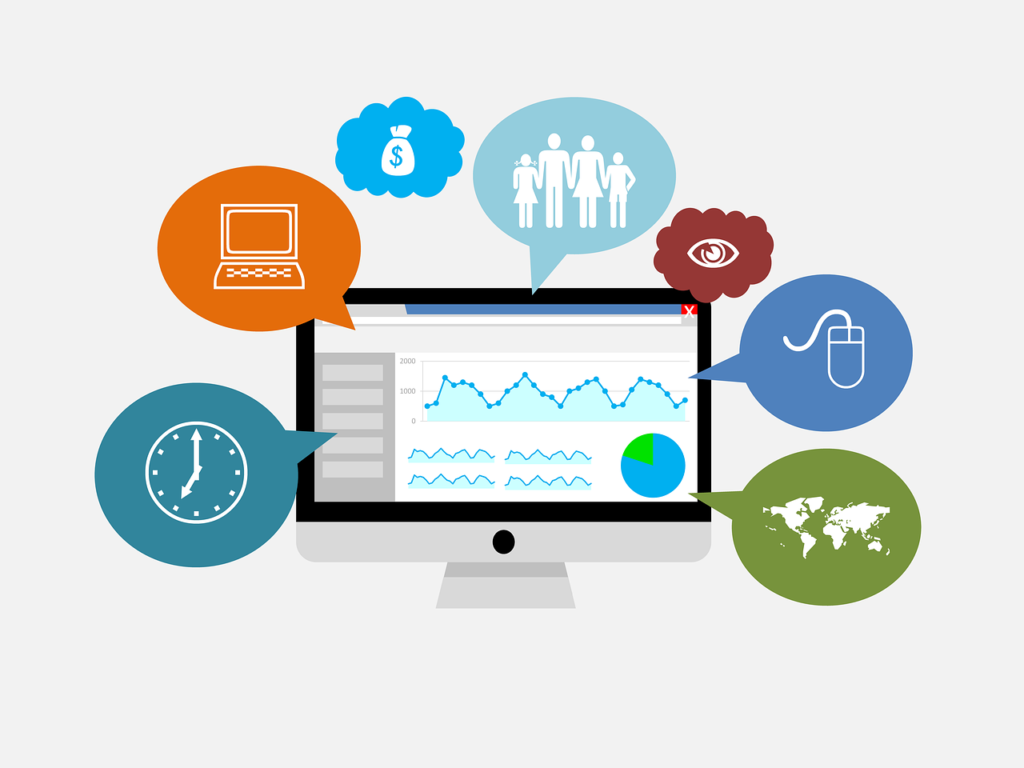The marketing landscape is ever-changing, demanding adaptability in strategies to stay competitive. In this blog post, we will dive into the vital role of analytics in enabling rapid pivots, ensuring your marketing efforts stay aligned with dynamic market shifts.
Knowing the importance of data-driven decision-making, we have structured a well-organized guide to assist you in efficiently utilising analytics. So, let’s get in!
The Power of Analytics in Marketing
Analytics in marketing refers to the systematic analysis of data and statistics to gain valuable insights into the performance of marketing campaigns, customer behaviour, and overall business operations.
It involves collecting, interpreting, and visualising data to inform strategic decisions and optimise marketing efforts.
Types of Marketing Analytics
- Descriptive Analytics: Descriptive analytics involves examining historical data to understand past marketing performance. It provides a snapshot of what has happened, including metrics like website traffic, sales, and conversion rates.
- Predictive Analytics: Predictive analytics uses historical data and advanced algorithms to forecast future trends and outcomes. In marketing, it helps predict customer behaviour, trends, and potential sales opportunities, allowing businesses to adjust their strategies proactively.
- Prescriptive Analytics: Prescriptive analytics furthers predictive insights by recommending specific actions to maximise desired outcomes. In marketing, it suggests strategies and tactics to improve campaign effectiveness and achieve marketing goals.
Key Benefits of Using Analytics in Marketing
- Data-Driven Decision-Making: Analytics empowers marketers to make decisions based on concrete data rather than guesswork. This leads to more informed and effective strategies, reducing the risk of costly marketing mistakes.
- Improved Targeting and Personalization: Marketers can segment their audience and deliver highly personalised content and offers by analysing customer data. This not only increases engagement but also enhances the customer experience.
- Enhanced ROI: Analytics allows businesses to track the performance of marketing investments accurately. It helps identify which marketing channels and campaigns generate the highest return on investment, enabling resource allocation for maximum profitability.
Recognising the Need for a Pivot
Market Changes and Challenges
In today’s dynamic business environment, staying ahead requires constant attention.
- Competition: Rival companies can swiftly disrupt your market position. Regularly analyse your competitors’ strategies and market share to identify threats.
- Consumer Behavior Shifts: Consumer preferences change rapidly. Monitor buying patterns, channel preferences, and product demand shifts closely.
- Technological Advancements: Emerging technologies can render your existing strategies obsolete. Stay updated on tech trends to preempt disruption.
Monitoring Key Performance Indicators (KPIs)
Effectively monitoring KPIs is paramount to recognising the need for a pivot.
- Identifying Trends and Anomalies: Regularly analyse KPI trends to spot deviations that may indicate a need for change. Swiftly address declining metrics or unusual spikes.
- Benchmarking Against Historical Data: Compare current KPIs with historical data to assess performance over time. Recognise whether your strategies are still effective.
Building a Data-Driven Marketing Strategy
1. Gathering Relevant Data
In data-driven marketing, the first step is to gather the correct data from various sources. Here’s how:
Internal Data Sources (Website Analytics, CRM)
Your website and Customer Relationship Management (CRM) system are treasure troves of valuable data. Analyse website traffic, user behaviour, and CRM records to understand customer interactions, preferences, and past purchases.
This internal data provides insights into your existing customer base.
External Data Sources (Market Research, Social Media)
Supplement internal data with external sources. Conduct market research to gain industry insights, trends, and competitive intelligence. Monitor social media platforms to gauge customer sentiment, engage with conversations, and identify emerging market trends.
External data helps you broaden your perspective and adapt to the changing market landscape.
2. Data Analysis Tools and Platforms
To make sense of the collected data, you’ll need the right tools and platforms:
Google Analytics
Google Analytics is a powerful, user-friendly tool for tracking website traffic, user behaviour, and conversion metrics. It provides real-time insights that help you refine your marketing strategies on the fly.
Marketing Automation Software
Invest in marketing automation software like HubSpot or Marketo to streamline marketing campaigns, track customer interactions, and personalise messaging. These platforms automate repetitive tasks, enabling more efficient data-driven marketing.
Customer Relationship Management (CRM) Systems
CRM systems like Salesforce or Zoho CRM help you manage customer data, track leads, and nurture relationships. They provide a 360-degree view of your customers, facilitating targeted communication and personalised marketing efforts.
3. Setting SMART Goals
To ensure your data-driven marketing strategy is on track, establish SMART goals (Specific, Measurable, Achievable, Relevant, and Time-bound) goals. They will give your team clear direction and benchmarks for success.
For example, aim to increase website conversions by 20% within the next quarter.
4. Creating Customer Personas and Segments
Use data to build detailed customer personas and segments. Understand your audience’s demographics, preferences, pain points, and buying behaviour. This enables you to tailor your marketing efforts for maximum impact
Conclusion
In a rapidly changing marketing landscape, adapting is paramount. Utilising analytics empowers businesses to make informed decisions, spot emerging trends, and refine real-time strategies.
Embrace the data-driven mindset, and success in marketing will hinge on your ability to pivot and thrive in constant change.




